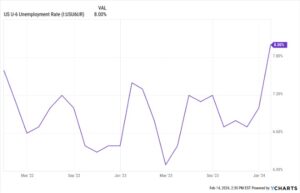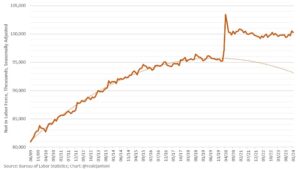
Last week, Sean demonstrated something that everyone that wants to understand the true state of our economy needs to understand: Many of the numbers we get from government agencies, numbers that are repeated uncritically by the press, are either misleading or downright deceptive because (1) the government wants taxpayers to be ignorant about economic issues, and (2) the kids that are hired to work as journalists are dumber than dental floss.
This week, Sean takes his mission to another level by talking about why all the misinformation put out by the government and published in major news outlets (including the NYT and the WSJ) is wrong, and what that should mean to you. – MF
Last week, I explained why job growth numbers published by the White House appeared to be misleading at best…
And covering up a serious problem at worst.
Today, I want to talk about unemployment numbers specifically, and why the headline unemployment figure is more than just overly simplified. It distorts the economic hardship people are facing.
We have been consistently hearing that the US unemployment rate is currently 3.7%.
But that does not mean that 96.3% of people in the US are employed.
This unemployment percentage does not include workers who have given up actively seeking a job or freelancers or gig workers who recently lost clients. It also doesn’t specify whether workers are employed part time or full time.
Once we factor in the total number of unemployed people, plus “marginally attached” and part time workers, that unemployment number surges to 8%.

Even when we do this, the figure doesn’t factor in the fact that, since 2020, the number of people who have “opted out” of the U.S. labor force has stayed stubbornly high.

And none of these numbers yet factor in how companies around America, in every industry, have been laying people off in droves.
There’s rot beneath the veneer of the US’s “surprisingly strong economic growth” in recent months.
Unless something changes, it will be spreading to the surface sooner rather than later.
– Sean MacIntyre
Sean is working on a video about this topic. You can be notified when it’s complete by subscribing to his YouTube channel here.
 MarkFord
MarkFord